Growing Marijuana Seeds In North America
Growing Weed Seeds in North America has become much more commonplace in the last couple of decades. Americans have no doubt been growing cannabis actively in the underground market since it was first introduced. Cannabis had likely grown naturally in part of North America for hundreds of years but was brought more into the mainstream knowledge when Indian and Mexican immigrants arrived between 1910-1920 and brought their unique ‘hashish’ or ‘marihuana’ products with them. Ironically, California was both the first state to make cannabis illegal in 1913 and then also the first state to re-enact legalized medical cannabis in 1996. Colorado and Washington kicked off the recreational growing industry in 2012 and now over 80% of the states allow the legal growing of some form of marijuana plant (for example, some allow only CBD strains or have mixed regulations in different counties within the state).
Check your local state guidelines to see how many marijuanas plants you are allowed to grow. State laws generally range from three to twelve plants per person, and usually only a portion of those are allowed to be in the mature (flowering) stage. Once you determine that you are allowed to grow where you live, the next steps involve the many aspects of learning to grow cannabis from seed. Of course there will be other questions that follow such how to choose from the various cannabis seed banks in North America, and what is the best soil for growing cannabis, but you have to start somewhere, so let’s just dive in and get your feet wet with some of the most important aspects of cultivation that you need to understand as a new grower of North American Cannabis Seeds.
The Different Growing Climates Of North America
North America covers a huge expanse of land, from the 8th parallel all the way up to the 80th (although not many people live north of the 60th latitude in Alaska and the Canadian Shield). The USDA uses a rating system that assigns the different cities and regions a place along the scale of growing zones or planting zones, that go from 1 to 13. Areas like the Northeastern US, including Virginia, Michigan, and Maine, have a cooler annual temperature, therefore average plant hardiness scores range from 3 to a 7. The Southeastern states of Alabama, Florida, and the Carolina’s have a much higher hardiness score of 6 through 10.
In a similar fashion, The Government of Canada has outlined a plant hardiness zone mapping system that rates the regions of the country from a zone 0a (coldest) to an 8a (warmest). Regardless of how you classify your growing region, with numbers or labels, the cannabis plant’s ideal temperature range is in the range of 70-85 degrees Fahrenheit. A few key limits to keep in mind is that when growing weed from seed, you want to avoid temperatures from ever dipping below 59℉ as they are likely to suffer irreversible damage. Like most people who live in North America, the opportunity to grow a weed plant outdoors only comes up for a brief window of time each year. This is one of the main attractions of growing cannabis indoors – you can have repeat growth cycles all through the year.
Canadian Cannabis Regulatory Agencies
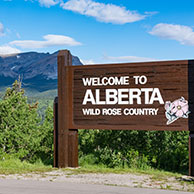

Alberta Gaming, Liquor and Cannabis Commission


British Columbia Liquor and Cannabis Regulation Branch
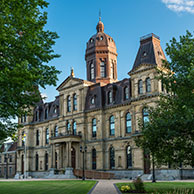

New Brunswick Liquor Corporation
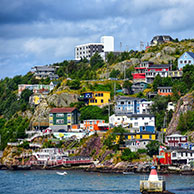

Newfoundland and Labrador Liquor Corporation
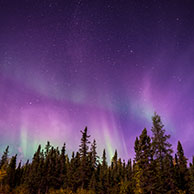

Northwest Territories Liquor Commission
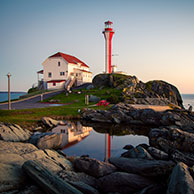

Nova Scotia Liquor Corporation
Major Cities And Municipalities In North America
Both countries that make up North America, Canada and the USA, are two of the largest in the world, right after Russia of course. If you haven’t been to The Great White North, ten of the most popular Canadian cities to visit are: Toronto, Vancouver, Montreal, Niagara Falls, Victoria, Halifax, Quebec City, Calgary, Ottawa, and Edmonton.
If you are a new visitor looking to explore the cannabis culture in one of these areas, you can often find online bookings for cannabis-related excursions such as dispensary tours, infused cooking classes, or cosmic art workshops. Now that the tourism industry has taken a major hit from the coronavirus outbreak, many of these offerings are now made available online in the way of zoom-based joint rolling lessons or ‘toke ‘n’ talk sessions with an experienced cannabis professional online. Since the federal law remains the same across the board, Canadians are permitted to grow a maximum of 4 plants recreationally at home. Medical licenses can be issued for approved individuals to grow a higher limit to meet the demands of their medicinal marijuana use.
The top cannabis-friendly cities to visit in the United States are:
- Los Angeles, California
- Denver, Colorado
- Seattle, Washington
- Portland, Oregon
- Las Vegas, Nevada,
- Anchorage, Alaska
- Boston, Massachusetts
- Chicago, Illinois
- Burlington, Vermont
- Washington, D.C.
There are multiple other cities that openly welcome cannabis culture such as Oakland, Jersey City, Oklahoma City, Phoenix, San Francisco, Santa Barbara and many more that will welcome you in with the sweet smell of Mary Jane as you walk through the parks and side-streets. If you live in any of the above listed places, you are pretty safe to grow at least a few plants at home, but there are others we will point out later on (mostly in the deep south) that are still strongly opposed to home herb cultivation.
Ways To Grow Marijuana In North America
As a simple first step of classification, growers need to decide if their location and skillset is better suited to outdoor growing, or indoor. For legal states with warm temperatures like Nevada, Oregon, and California, outdoor growing for at least a third of the year is very achievable. If you live somewhere like Michigan or Massachusetts and want to keep the smell of plants out of your home, there is always the option of setting up a greenhouse out back to still get maximal use of the sun’s energy.
When it comes to growing indoors, there are many more options that present themselves. The most basic of which is to purchase a grow tent with all the accessories already included. Full set ups are available online for as little as $500 that can get you growing a few plants in a very basic setup. Some individuals will choose to use their own DIY skills to fashion an indoor growing room out of their closet, spare bedroom, or basement. Just make sure you have great ventilation, a leak-proof flooring solution or drip-tray, a pest-management plan, and enough artificial light to really drive production.
Once you have mastered indoor growing in soil, you can also explore the possibility of hydroponics. This is when you use a soilless medium such as rockwool, clay pellets, pumice, or perlite. Nutrients are added along with water, and the plants roots are able to freely drink them up and support very good bud growth. The next level after this is to explore advanced growing techniques such as aeroponics (where roots are suspended in air and misted with nutrient solutions) and aquaponics (which is similar to hydro, with the addition of having fish in the lower reservoir whose waste products serve as nutrients to the plants growing above). Whichever method you feel most comfortable choosing to begin with, know that you can return here anytime to consult with the best indoor cannabis grow guide in North America.
Respecting North American Border Laws
When travelling across North America for leisure or business, there are certain rules that you need to be aware of when bringing your cannabis products with you. First and foremost, no cannabis should be crossing the US/Canada border whatsoever. Each country has its own legal limits and approved distribution system, but if border crossing officials smell the ganja in your car as you are passing through, you are likely to be turned away, have your car searched, or even face incarceration (up to 14 years!) for such an offence, even if done out of ignorance. Because marijuana is still federally illegal in the US, the government disapproves of any cannabis products traveling across state borders. If you purchase weed in a legal state, you must consume your products in that same state.
Canada is a bit more easy going in this area, as you can travel between provinces with your ganja stash and even take your legal limit of one 30 grams on the airplane with you for domestic flights. Medicinal marijuana and recreation products are viewed in exactly the same light when it comes to border laws. Do not take your Canadian weed back across into the US and expect to get away with it just because you have a prescription or ‘green card’. It will get taken away. US customs officials even reserve the right to confiscate marijuana-themed paraphernalia such as smoking accessories or even clothing that displays 420 culture.
Growing Cannabis In The Mountainous West
The West Coast is synonymous with growing premium cannabis products and has also paved the way for early legalization efforts starting in California, Oregon, and Washington State. The mountainous region also includes Arizona, Utah, Nevada and parts of Wyoming, New Mexico, and Montana. Let’s not forget beautiful British Columbia north of the border as they also produce some of the best marijuana in the world.
So, what is it about the West Coast that attracts such a powerful collection of cannabis enthusiasts? The northern oceanic climate features warm summers and cool, mild winters which is great for growing cannabis. South of the 40th parallel, the climate shifts to a Mediterranean type, where summers become a little warmer and drier. The West Coast is home to some of the biggest producers of medical marijuana and extractors of medical cannabis oil.
This part of the continent also attracts a wealth of sport enthusiasts, including extreme sports like skateboarding, surfing, snowboarding, and rock climbing, all which lean heavily into cannabis culture for medical and recreational reasons. When you have successfully grown, harvested, dried, and cured your West Coast marijuana, there are endless beautiful outdoor adventures that await you to explore with your backpack full of pre-rolls. Go on an overnight mountain trek or take a road trip along the beautiful coastal highways. Just watch out for other potheads along the way that you can exchange cannabis growing tips with and you are sure to have an exciting and educational journey.
Grow Weed In The Great Plains
The Great Plains of North America comprises the area sandwiched by the Mississippi River to the East and the Rocky Mountains to the West. Also known as the Great American Desert, this area includes parts of 10 different states. Montana, North Dakota, South Dakota, Wyoming, Nebraska, Kansas, Colorado, Oklahoma, Texas, and New Mexico. These parts of the country are responsible for much of the nation’s agricultural activity, largely in staples like corn, soybean, wheat and many other fruits, nuts, and vegetables. As growing weed in North America becomes more commonplace, hemp and marijuana plants are likely to join the top of those lists for major US agricultural activity. It was not so long ago that early settlers and farmers were obligated to grow a certain amount of hemp on their properties, to contribute to the national need for fiber, textiles, lamp oil, and rope. Industrial grade hemp is still grown across America, as well as hemp seeds for nutritional purposes. If this is up your alley, then we have lots of tips here on growing high CBD cannabis that is considered as hemp under the new Farm Bill of 2018.
Great Plains growers are going to face weather challenges that are often sudden and unpredictable. For centuries, those who cultivate the land here have witnessed droughts, floods, tornadoes, hurricanes, and severe winter storms. Even small shifts in the natural ecosystem can vastly affect the growth cycle of plant species like cannabis. For this reason, along with the conservative growing laws in much of the great plains, it is best to grow your ganja inside. You will likely be wanting to invest in the best lights for growing weed in North America if you want to match the outcome of master growers out there. Just remember in all the money you spend on lights, fans, timers, and nutrients, that it is still critically important to start with quality starting seeds from your trusted North American Seed Bank, Kind Seed Co.
Growing Pot In The Interior Lowlands
This area extends from central Saskatchewan down to the southern rim of the coastal plains. This includes Montana and Minnesota to the Northern part of Texas and stretches East to Kentucky, Ohio, and Tennessee. We’ve also got Mississippi, Arkansas, Missouri, Iowa, and Wisconsin making the list of lowland prairie states. The climate here is more or less classified as a temperate variety, with long cold winters can dip as low as -22 degrees F and summers that reach up into the high eighties. There is often less precipitation here as well on average than in the rest of the country, so this poses an extra challenge to farmers and outdoor cannabis cultivators. This region is starting to come around on the cannabis medical train, but many of the interior prairie states are still criminalizing the substance according to federal jurisdiction. For the legal retailers that are up and running, most are seeing a massive supply shortage since the licenses to grow were given out so stringently in the beginning.
As the government plays catch up to meet the supply with current demand, this is likely to be an exciting and profitable future ahead for medical weed growers setting up in the area. Just as the demand from consumers for well grown products depends on the skills of the local farmer, so too does the grower’s success hinge on the availability of a quality seed supply. Seed banks in North America are popping up left and right, so how do you know you are getting the best seeds available? Based on price, selection, and proven customer satisfaction, we can safely say that Kind Seed Co is the best place to visit for the broadest menu of North American 420 Seeds.
Grow Ganja In The Canadian Shield
Canada itself is a massive country, and the Canadian shield covers a huge portion of this, nearing the eastern coast and wrapping all the way around Hudson Bay to include the northern parts of Saskatchewan and Manitoba. The term shield itself refers not to the shape but the hard geological formations that make up this stable tectonic plate. This Precambrian rock is composed of igneous and metamorphic layers that date back anywhere from 2.5 to 4.2 billion years ago. The hard and nutritionally bare soil of this region is only a part of the discouraging factors here. There are also cold and early winters that affect the shield, making it difficult in the northern limits to grow any kind of vegetation, let alone growing marijuana.
There are certainly more moderate regions of the Canadian Shield to the south that touch down on the American border and encompass most of Ontario and Newfoundland as well as the entirety of Quebec. Geographically speaking, the shield also lays underneath the states of Minnesota, Wisconsin, and Michigan. Other than a short window of seasonable weather between May and August, those looking at growing pot
themselves should plan to do it indoors. If you have the right gear and give your plants adequate attention, indoor grown cannabis can match the strongest stuff on the market. You can save the backbreaking work of tilling and weeding your outdoor garden before the last frost and just order yourself a complete weed growing kit online and call it a day!
Canadian Cannabis Regulatory Agencies


Nunavut Liquor and Cannabis Commission
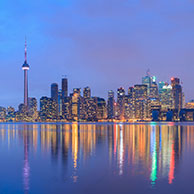

Alcohol and Gaming Commission of Ontario
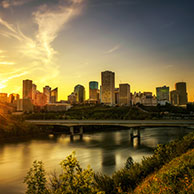

Saskatchewan Liquor and Gaming Authority
Growing Marijuana In The Appalachian Mountains
The great highland system of North America extends down the eastern side of the continent, mirroring the Rocky Mountains to the west. The Appalachian Mountain range extends from Newfoundland and Labrador in Canada south to the middle of Alabama. it’s peaks and valleys alter the landscape of Maine, New Hampshire, Vermont, Massachusetts, Connecticut, and eastern New York. They also extend into parts of Kentucky, Virginia, and Tennessee. The climate here is temperate and humid, and often around 10 degrees colder than the lower elevations nearby. The Appalachian weather patterns are largely influenced by two ocean currents; the Gulf Stream and the Labrador current.
Both retail cannabis outlets and large-scale production facilities are popping up in this region month after month as the legal landscape shifts more in favour of the recreational benefits of growing marijuana in North America. With the exception of the southern states (Florida, Georgia, Alabama, and the Carolinas), the rest of the Eastern United States has completely decriminalized marijuana. So, when living in the Appalachian Mountain region and looking for Weed Seeds in N.A., don’t be shy about browsing our entire database of incredible strains that can be shipped right to your home or growing facility.
Grow Cannabis Near The East Coast
As we just mentioned, the Eastern Seaboard states have become much more cannabis-friendly in the last two decades. Stretching all the way from Maine in the North to Florida in the South, the Atlantic coast is full of opportunities for experienced cannabis cultivators as well as newbies asking how to grow high CBD cannabis for the very first time. The climate along the upper East Coast is considered continental, with moderately warm summers and long cold winters.
As you travel down the coast past New Jersey and Delaware, the climate becomes semi-continental. Essentially, the summers get longer and warmer. The humility also increases as you descend down the coast, making it the perfect environment for outdoor cannabis growing. Unfortunately, these southern East Coast states are the least open to cannabis growing at the moment. Constant storm weather like hurricanes and flooding are also likely to occur from time to time so indoor growing is yet again the most failsafe way to protect your crop and keep your results consistent. Yes, it’s true that you will need to purchase some marijuana grow lights and some other equipment that may run you one to two thousand dollars. But this will easily be made up within your first 1-2 crops.
United States Cannabis Regulatory Agencies
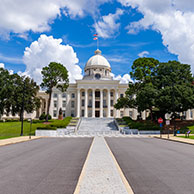

Alabama Medical Cannabis Commission
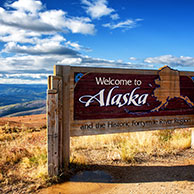

Alaska Marijuana Control Board


Arizona Department of Health Services
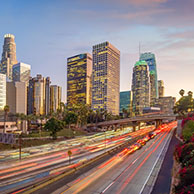

California Bureau of Cannabis Control
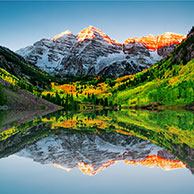

Colorado Department of Revenue Enforcement Division Marijuana Enforcement


Connecticut Department of Consumer Protection
Growing Weed In Mexico
Mexico has had an interesting and long-running relationship with the plant. Generally speaking, it has been illegal since 1920 after most of the turmoil of the Mexican Revolution had subsided. In 2009, Mexican officials decriminalized possession of up to 5 grams and a few years later (over 2015-2016), medicinal use was approved, but just for strains containing less than 1% THC.
Cannabis had been prevalent in Mexico since the 15th century when the Spanish brought over hemp seeds and encouraged its production for textiles and rope. The most recent step forward for Mexico happened on Halloween of 2018, when the Supreme Court ruled that banning recreational cannabis used in Mexico was unconstitutional. The deadline has been extended many times, so it is just a matter of time before the country finally starts to regulate the sale of legal weed. It will be interesting to watch and see how the mass population responds to these changes, since the black-market drug export activities have been flourishing for so long.
Mexico has an absolutely dreamy weather for growing cannabis almost year-round, ranging from tropical to desert climate zones. North of the 24th parallel (around the Mexican city of Durango), cities tend to experience more of a cool winter during the months of October to March. In the southern part of the country, the temperature stays fairly consistent year-round, with only a 9 degree F difference between average summer and winter temperatures. If you’re wondering, is it legal to grow CBD plants in Mexico, then the answer is invariably yes. Just order up your North American CBD Seeds, and let nature take its course. The marijuana growing tips that our website outlines for American growers will also apply for any of our seeds that sprout up in Mexican soil or grow tents. Get your foot in the door quickly during this important transitional time, since before you know it, large corporations will be rolling in with their weed factories to take up a controlling upper hand to corner the market.
Favorite North American Sativa Strains
After reading this far, if you are eager to get growing but as of yet uncertain about what to grow, we are happy to make some popular recommendations. Among our top selling strains of all time are the sativa strains that keep people motivated, cheerful, de-stressed, and spiritually uplifted. Super silver haze has a very heady, long-lasting high that is full of cheerful motivation and artistic inspiration. Sour Diesel is another highly cerebral strain that will either get you very chatty for your next social event or amp up your energy for chores and mindless tasks if you are stuck at home working alone. One of the ultimate strains for musicians, artists, and other creative people is Jack Herer. Jack doesn’t have the highest THC of the bunch, but the high is extremely fun and highly sought after for its uniquely bubbly and euphoric effects. Even die-hard sativa fans will need a come-down strain every now and again, so let’s now highlight a few of the best indica strain choices on the menu right now.
United States Cannabis Regulatory Agencies
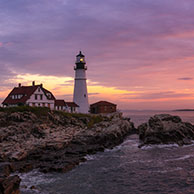

Maine Office of Marijuana Policy
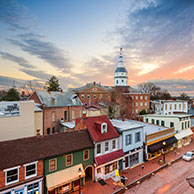

Maryland Medical Cannabis Commission
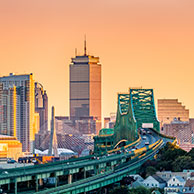

Massachusetts Cannabis Control Commission
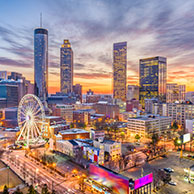

Georgia Access to Medical Cannabis Commission
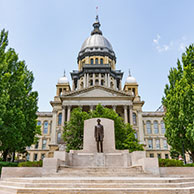

Illinois Department of Financial and Professional Regulation, Cannabis Regulation Oversight Officer
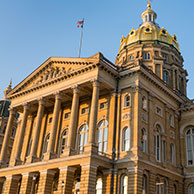

Iowa Medical Cannabidiol Board
The Best North American Indica Strains
Indica strains have a classic reputation for putting folks ‘in-da-couch’, but this is not always the case. A qualitative way to identify indica vs sativa strains is that the indicas have more than 0.5% myrcene content. This is the spicy and peppery terpene that has a relaxing and sedative effect. Depending on what other genes and terpenes are handed down, the strain may not have an instantly sleepy effect, but a nice solid body high that you can enjoy for a few hours. Northern Lights is one of these strains that has a serious effect on aches and pains, but enough mental stimulation that it will keep you engaged in reality with its small dose of Thai sativa in its lineage. Master Kush and Blueberry are two other examples of popular indica strains that will give you a new appreciation for the power of cannabis to restore and relax. For many cannabis users, new and old, picking from the sativa and indica categories feels too challenging. Especially when there are so many great hybrid strains that offer a ‘best of both worlds” type of experience.
Winning North American Hybrid Seed Strains
Hybrid cannabis is a huge category of strains that have mostly come into play through mixing a sativa parent with an indica parent and selecting for the most desirable traits of each. Dominant traits can come through on either end of the scale, while many popular hybrids are able to offer a perfect 50/50 balance that can be used for all sorts of applications. Hybrid strains also have some of the coolest names, like Space Queen and Ice wreck which are examples of two great 50:50 hybrids. If you like chasing the upbeat euphoria that cannabis can offer, then hybrids like Blue Dream and White Widow are going to be perfect for you with a gentle 60/40 split in favor of the sativa side. For your evening, or dessert weed, try some of the most popular 60/40 indica strains such as Girl Scout Cookies or Gorilla Glue.
Marijuana In The North American Stock Market
Since 2009, marijuana businesses have started being traded on the public stock market, an exciting time that very few of our forefathers could have predicted. And the industry as a whole is only destined to grow, you can expect to see many new companies starting to enter the space. Most of the successful stocks are linked to multi-million-dollar corporations who have really changed the face of cannabis growing, which started as an exclusively grassroots activity. In a difficult time when many American industries are in recession, the cannabis stock market is providing a reassuring opportunity for investors to make a big win. You can learn a lot about day trading these days from online videos and other made-to-market business opportunities. Alternatively, you can find a local stockbroker and ask them to help get your foot in the door with some up and coming marijuana stocks.
Cannabis Related Jobs In North America
Bringing the sale of cannabis to the legal marketplace has had many benefits to society, from the local community level to the national GDP as well. Expected to be a $35 billion market by 2025, there are positions at the retail level, like budtenders and store managers, as well as growers, branding executives, and inventors solving packaging problems. To think that all of this starts with just one tiny seed is pretty incredible. Perhaps you are ready to get engaged with your particular skill set and carve out a niche for yourself in the ever-growing marijuana marketplace.
It doesn’t matter where you live in America geographically, there will be an increase of jobs available in the workplace as a result of this new industry. Distributors and warehousing professionals will be called on to handle the safe storage and transport of marijuana products across the country. Lab analysts and plant researchers will likely get their fingers wet in the opportunity to work with cannabis plants. Whether in it to produce new strains of medical marijuana for anxiety or to extract certain genes to better understand the phylogeography of existing strains and how they came to be. If you are a web-designed, farmer, cashier, or marketing expert, there is likely a place for you to switch lanes and find employment in a cannabis-related role. Not only is the increase of employment a great thing for cities across America, the taxes collected from recreational sales will help to support government funded programs and activities at the state level.
United States Cannabis Regulatory Agencies
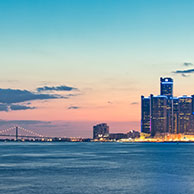

Michigan Department of Licensing and Regulatory Affairs Bureau of Marijuana Regulation
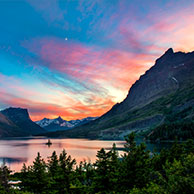

Montana Department of Revenue
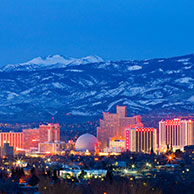

Nevada Department of Taxation


New Jersey Cannabis Regulatory Commission
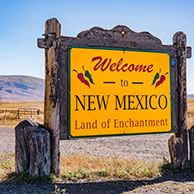

New Mexico Cannabis Control Division


New York Office of Cannabis Management
Marijuana For Medical Purposes In North America
The face that medical marijuana is making a comeback in the world today is fantastic, but not all that surprising. This herb has been used for several thousand years by human civilization for medical and ceremonial purposes. Our modern technologies may be capable of providing more concentrated forms for our consumption, but otherwise our dependence on the substance hasn’t changed much in Millenia. There is a huge encyclopedia of conditions that can be treated with medical cannabis, but here are a few of the most predominant ones that we see use for in the United States:
- Chronic Pain
- Insomnia
- Depression
- Anxiety
- PTSD
- Multiple Sclerosis
- Crohn’s disease
- Epilepsy
- Seizures
- Glaucoma
- Severe nausea
- HIV/AIDS
- Cancer
- Alzheimer’s disease
Many states will require individuals to hold a medical marijuana card, which often just means applying online with a self-declared medical condition and filing the registration fee. Sometimes you will require a doctor’s letter of acknowledgement as well, so it helps if your doctor is already aware of your desire for medical use.
If you are a conservative Christian or other firm anti-drug proponent wondering ‘how is marijuana medicinal?”, it just takes the right experience, with the right products at the right time to change your mind, if you are open to it. If you are already a hobby kush growers looking to go medical, there is no need to research how to grow CBD strains. The technique is exactly the same, but the plant’s genetics will drive the production of a different set of chemicals (CBD instead of THC, for example).
Understanding North American Cannabis Slang
The proper name for this plant we are highlighting is cannabis (from the Greek ‘kannavis’ and previously Persian “kanab’). However, many people use the slang word marijuana, derived from the Spanish ‘marihuana’ that was used by early Mexicans in the USA at the start of the 20th century. Some websites claim that there are well over a thousand slang terms, but some have mostly likely lost their shine and been left at the wayside. 420 is a classic abbreviation, or code word, that many stoners are familiar with. This was allegedly the time of day when a group of teens at a California high school used to meet at the smoke pit to share a doobie. Another numerical code is 710, which is the upside down and backwards representation of “OIL”. Our site just happens to carry the best selection of 710 Seeds in N A that you can grow for cannabis oil and other extraction techniques.
If you see any of the following slang terms in passing, you will know it is the good green herb that is being discussed:
- Chronic
- Amnesia
- Mary Jane
- Bhang
- Blaze
- Blunt
- Bud
- Cheeba
- Chronic
- Dope
- Ganja
- Grass
- Hashish
- Homegrown
- Pot
- Reefer
- Sinsemilla
- Whacky Tabacky
Growing Autoflower Marijuana Seeds In N.A.
Autoflower seeds are an exciting thing to see in action. Low and behold, these puppies know how to switch from vegging stage to flowering stage on their own accord after a set number of weeks after being germinated (usually 3-4 weeks of vegetation). You can now buy many varieties of Autoflower Weed Seeds in North America, and get results a fair bit faster than with standard or photoperiod seeds. Aside from time savings, you are also less likely to make fatal mistakes with your autoflower plants, since they are resistant to lighting mistakes such as inconsistent light-dark schedules or light leaks in your grow tent.
Autoflowering plants also do not grow as large as their photoperiod counterparts, and this can make them easier to grow as well. Pruning will be less work to stay on top of, and the better visibility will make it easier to spot pests or humidity problems straight away. The overall size usually tops out at around two and a half or three feet, and this comes largely from the influence of the ruderalis genes. Autoflower plants do not require as much nutrients. Most manufacturers advise diluting to ¼ strength so as to not cause nutrient burn to the plants. So, even though the plants are smaller, you can fit more of them into a given grow room, and the turnover is often a few weeks faster, so in the course of an entire year you can easily match your overall yield by growing autoflowering cannabis strains and giving them adequate care and nutrients.
Grow Feminized Weed Seeds In N.A.
Creating feminized seeds is a practice that has been used in agriculture long before it was adapted to marijuana growing. The first North American Feminized Seeds were developed by the breeder Dutch Passion and brought over in 1997. The technique to create feminized seeds today remains very similar to the practices used then the idea was first developed. Essentially, the methods are based around stressing the female plant to such a degree that it gives up on bud protection, and creates male flowers to assist with self-flowering in order to protect the species’ genome.
Feminizing seeds can be done a number of ways, the first of which is rhodelization. Using this method, growers let their plants grow very late into flowering, past the point that healthy plants should be harvested. Feeling an urgency to procreate, the females actually develop pollen sacs themselves and self-pollinate. This is simple and doesn’t require the chemicals that we will get to shortly, but the downside is that there is a much higher probability of the plants becoming hermaphrodites and therefore passing on hermaphroditic seeds.
The other way to selectively produce seeds on just a portion of your plant, you spray a diluted solution of colloidal silver or gibberellic acid on a section of plant twice a day for a week or so, you will start to see pollen sacs develop here at which point you can stop allying the solution. If you are growing natural cannabis seeds in N.A. and are worried about ingesting these chemicals, you are on the right train of thought. After rodelization or spray treatment, the buds from these plants are no good for consumption. The seeds will be free of any harmful products, so no need to worry for future generations of your homemade hybrid bud seeds.
United States Cannabis Regulatory Agencies
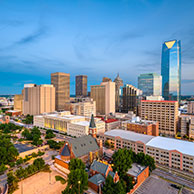

Oklahoma Medical Marijuana Authority


Oregon Liquor Control Commission
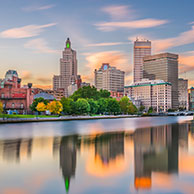

Rhode Island Office of Cannabis Regulation


Virginia Cannabis Control Authority
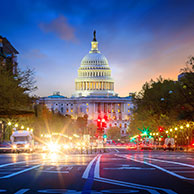

Washington State Liquor and Cannabis Board
Grow CBD Seeds In N.A.
The rate of growth of the North American CBD market is arguably growing faster than that of the recreational THC market. Older generation folks who would never be interested in getting high are now flocking to dispensaries for best-selling CBD roll-on sticks and oral tinctures. CBD is Cannabidiol, and is entirely non-psychoactive. As such, it is legal for sale throughout the US and Canada and can be purchased online or over the counter. Growing CBD in Central America is sometimes prohibited, but generally unregulated. Most countries do not yet have specific laws regulating CBD use or cultivation.
Cultivating CBD weed is really no different than other types. Because of the end use, some CBD growers may have an additional layer of hesitation keeping them from using any chemicals in the growing process. Organic cannabis growing is the best practice in any situation, but especially in high CBD products that have a higher likelihood of being used by medical patients who have a lowered immunity. Products created from CBD isolate are fairly failsafe since they are made with starting ingredients with 99.9% purity.
When really invested in purity, consumers are really best to buy their own CBD seeds online and then be very involved every step of the way. Using homemade compost and other natural fertilizers can be a great way to ensure a nice clean smoking CBD flower.
How To Find The Best Quality North American Seeds Online
When searching the internet for CBD seeds or THC seeds, you can see our commitment to selection and low pricing as soon as you browse the first few pages of our menu. Quality is at the top of our list of team priorities, and we spot check out various strains to ensure the germination rates are on point. Quality is more than just a seed that germinates though. Hearty genetics will prove themselves in your grow room with great yields, complex aromas, and sometimes even built-in resistance to pests. Even the best quality seeds are no replacement for diligence and commitment to the wellness of your plants. Do not assume that you can spend top dollar for premium seeds and then let them grow themselves. It only takes a day or two for a small humidity problem to turn into a full-blown mold problem. The best quality cannabis depends on quality of care, not just quality seeds. When you have the gusto and the time to dedicate, we can help you with the quality seed apart. Just Contact US to submit your order over the telephone or buy them directly online using our variety of payment methods.
The Benefits Of Using A North American Seed Bank
The benefits of ordering seeds online from a certified Seed Bank are many, but most translate directly to saving your time or your money. You could spend countless hours driving across town to check the stock levels of all the local dispensaries, or you could just have exactly the seeds you want ready in your virtual shopping cart within minutes of pulling out your smartphone or laptop. Your shopping experience is kept secure with our online encryption methods and discrete shipment packaging. Reputable seed banks in America should have plenty of positive customer reviews and a certain level of guarantees, such as minimum germination rates and to be free of males when you invest in feminized seeds.
Aside from quality, you will also get the best selection when shopping online. Kind Seed Co carries the widest assortment of Wholesale Seeds in North America for you to choose from, so start your strain research today. If you need help clarifying which strain of cannabis is the perfect choice for your region and your personal needs, you can consult the blog articles throughout our page or the strain reviews on a variety of online sources like wikileaf or allbud.com. There are a ton of helpful resources available for free on the internet today, but when it comes to getting the best seeds to start your weed garden with, there is only one Kind Seed Co.
What is the best North America Seed bank ?
